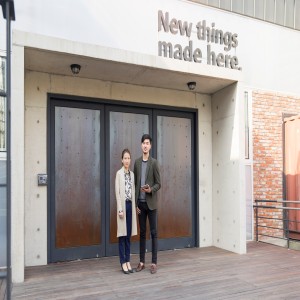As a student, to seize a learning opportunity abroad is often a life-changing experience. For Tosh Yamamoto, journeying from Japan to the United States to earn his Ph.D. opened his eyes to a new way of thinking about originality:
“In [Eastern] culture, where the concept of ‘learning’ has been best described as copying or mimicking a master’s work or art through apprenticeship, and where the originality has been given to the master and his school, originality at the individual level [is] hard to get settled in such a culture.”
In this context, if mimicry is a learning tactic, original thought might be a huge leap. That said, Yamamoto was able to make that leap himself, not by denying his roots but by acknowledging them as a starting point for originality. His time in the US allowed him to embrace the differences between his home culture and his new culture, expanding his view of original student work in monumental ways.
Soon after he returned to Japan and started teaching at a university, Yamamoto noticed something else: professors themselves were hiring translators to write English papers for submission, bringing up yet another question about originality. If the quality of his peers’ papers was not dependent on the skill of the original writer, but rather the caliber of the hired translator, how did that affect its overall authenticity? And furthermore, if it was culturally acceptable at the university, where did he fit in?
Yamamoto shared that “hiring a translator for a paper has been the common practice and the justified expenditure of the research grant fund,” which left him with a choice on how he wanted to proceed. Now a Professor at the Center for Teaching and Learning at Kansai University in Japan, he has made a conscious effort to model originality in his own work and writing, emphasizing the value of integrity not only for the benefit of his students but for his colleagues, as well. He hopes that by leading by example, he can help to transform the culture from the inside out: “The educators must first demonstrate [best practices and be] good role models for their students for their benefit.”
In order to incorporate the concept of original thinking and writing into his courses, Yamamoto interacts with his students at Kansai University in a non-authoritative manner, holding conversations with them and helping them to understand their own mistakes. “Educators are not the policemen for students’ misconducts for plagiarism,” he believes. He hopes to help them to form their identities as young adults with an established sense of lifelong integrity.
“Students are usually not aware of the difference between plagiarism and the fair use of quotes. Further, the students think that the act of plagiarism will not be easily revealed and accused. When I demonstrate how an IT tool such as Turnitin®’s iThenticate® can easily detect such unfair uses as well as the academic penalty for plagiarism, most of the students will stop conducting plagiarism. It is also emphasized that plagiarism [could] end the students’ future careers.”
At Kansai University, Yamamoto is creating a learning environment that nurtures young scholars to become mature ones. By modeling best-practices in integrity and utilizing instructional technology proactively, he hopes to help students see the value of originality, no matter the age, subject, or home culture:
“Plagiarism is not the key to lifelong success in communication. Only honest, sincere, and original work will lead to success.”








